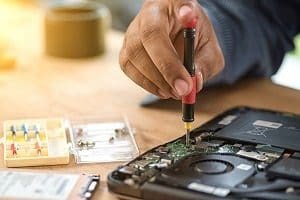
Commission Initiates Product Repairability Study While Raising Prospect of New Labeling Requirements for Goods


The study has the title of a “Scoring System on Repairability” and, according to a new website dedicated to it, will “analyse and develop a potential scoring system to rate the ability to repair and – where relevant – upgrade products”.
The study has been initiated within the context of the wide-ranging EU Circular Economy Action Plan but also the more specific Ecodesign Working Plan 2016-2019 and, in particular, the Working Plan’s stated intention for the Commission to:
… explore the possibility of establishing more product-specific and/or horizontal requirements in areas such as durability (e.g. minimum life-time of products or critical components), reparability (e.g. availability of spare parts and repair manuals, design for repair), upgradeability, design for disassembly (e.g. easy removal of certain components), information (e.g. marking of plastic parts) and ease of reuse and recycling (e.g. avoiding incompatible plastics), greenhouse gas and other emissions, and to further establish the scientific basis for developing corresponding criteria that meet the requirements of the Ecodesign Directive. This will be undertaken both for new product groups identified… as well as for upcoming reviews of existing product-specific measures… taking into consideration the estimated benefits and costs of proposed measures as well as Annex II of the [Ecodesign] Directive, according to which the requirements to improve the environmental performance of products need to avoid significant losses of performance or usefulness for consumers.
Stakeholders known to the JRC from contributions to earlier, related studies (e.g. ecodesign preparatory studies; studies intended to establish EU Ecolabel and/or Green Public Procurement criteria for products) have already been contacted to advise them of the study’s launch, also that the study will run in two phases and that there are public meetings planned for June and November 2018. RINA numbered among these stakeholders and took particular note of the study phasing; this will entail progression from an initial “development of a general approach for the assessment of products” to the subsequent testing of this approach on specific products of interest, namely laptop computers, vacuum cleaners and washing machines. Clearly, then, items of electrical and electronic equipment are in the frame, and especially consumer durables. This is largely to be expected, although possibly made conspicuous by its absence from the shortlist for testing of the approach is mobile phones. As a product group, these have already been subject to much investigation, discussion and debate concerning durability and repairability and are a focus of collaboration between industry, think tanks and NGOs such as Green Alliance’s “A circular economy for smart devices” initiative and Forum for the Future’s “Open Eco Ratings” web tool. It is therefore a little surprising that the Commission is not seeking to build on these efforts, although it may wish to look at other product groups precisely because mobile phones have merited a lot of attention to date.
In addition to the phasing of the study, a further point of note is that the study may pave the way for durability/repairability labeling. This was mentioned in the communication that went out to stakeholders introducing the study, which stated that the “technical background resulting from the study may be used to set the framework and grounds for the development of a graphical label” before going on to clarify that the development of any such label would, however, be conducted separately and by technical consultants with relevant expertise. An entirely new type of product label or, alternatively, the addition of product durability/repairability/upgradeability information to the EU Energy Label, could be in the offing. This raises lots of questions, not least how to make meaningful comparisons between products when durability, repair and the potential for upgrading are three quite different technical aspects to any given product. Evidently, investigation of a scoring system for reparability (the study’s intent) is a first step.
For further information, please see the study website.









